Term archive

投稿タイプ:column
[Rent a Car and Explore the Southern Part of Kyoto! 2] Find Hidden Kyoto Spots: a Temple, Shrine, Nature, and Delicious Food!

投稿タイプ:pamphlets
Discover your own KYOTO
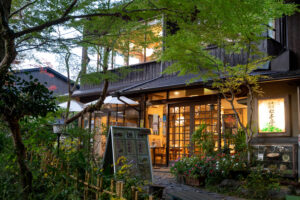
投稿タイプ:stay
Matsumototei
Nestled on Mt. Kasagi since 1890, this ryokan (Japanese inn) has been welcoming many guests for over a century. Their famous pheasant dishes (reservation required) are a must-try, including hot pot dishes, stone-grilled pheasant, sashimi (sliced raw pheasant), and more. Matsumototei is the perfect place to experience Japanese nature, culture, and hospitality.
Located close to Kasagidera Temple, it's a wonderful ryokan to stay in. The temple is amazing, and the momiji (Japanese maple leaves) are beautiful especially in the fall. If you're lucky, you also might see a sea of clouds from the mountain in the cold season.
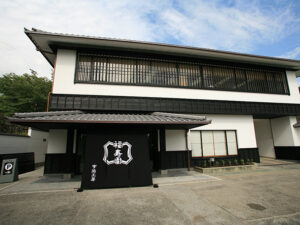
投稿タイプ:sightseeing
Hands-on Activities at Ujicha Kobo of Fukujuen Uji Kobo
Fukujuen Uji Kobo offers comprehensive tea experiences on the both banks of Uji River, with Ujicha Kobo on the right and Ujicha Tei on the left.
At Ujicha Kobo, there are various hands-on activities, such as making tea through a process including rolling, loosening, and massaging tea leaves. You can also dry tea leaves by massaging them on a ceramic plate, making matcha green tea by grinding the tea leaves with a traditional stone mill, creating Asahiyaki pottery or painting it. Moreover, you can learn the etiquette of the tea ceremony of matcha or sencha (Japanese green tea that you brew to enjoy) in a tranquil tea-ceremony room. At the Museum or the Tea Garden, you can visually experience the beauty of the culture of Uji tea, too.
When you get hungry, visit their Cafeteria. They have various sweets and dishes made with Uji tea. You can brew your tea and drink it, too. After exploring the world of Uji tea through multi-sensory experiences, find gifts for yourself and your loved ones, like high-quality tea, sweets made with tea, teaware, and more.
(At the Ujicha Tei, you can enjoy eating, drinking and shopping, too.)
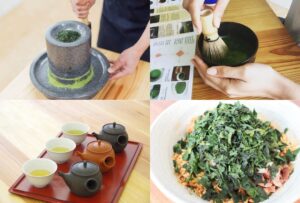
投稿タイプ:restaurants
D:matcha Kyoto
D:matcha Kyoto offers amazing tea experiences. The Tea Farm Tour & Tasting is available in both Japanese and English. First, you can learn about various aspects of tea, such as its types and production methods. After that, you can grind tea leaves into matcha powder using a stone mill. Then, you can stroll through their beautiful tea plantation, pick tea leaves, and tour their tea factory. Finally, discover the distinct flavors of homegrown teas with a tasting, and enjoy a delicious lunch. The ingredients, including but not limited to the Wazuka tea leaves, are locally produced as much as possible. They offer unique and flavorful experiences found nowhere else. You can also enjoy desserts using Wazuka tea for an additional fee. Have a wonderful time with the beautiful view of tea plantations from the windows.
Their shop also offers great items including sweets featuring tea. Additionally, a delightful accommodation experience is available as well.

投稿タイプ:column
Rent a Car and Explore the Southern Part of Kyoto! Go on a One-Day Road Trip Around “Kyoto Tea Country”!

投稿タイプ:column
Discover Unique Sake Breweries Across Kyoto
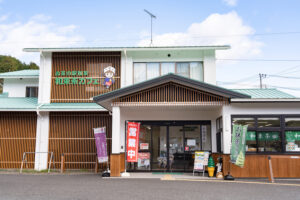
投稿タイプ:restaurants
Wazukacha Cafe
Wazukacha Cafe, in Wazuka Town, is located near the town office and the Wazuka-yamanoie bus stop. You can get tourist maps and information here, making it a great first stop on your trip. The inviting cafe offers sweets, drinks, and more, made with tea from Wazuka. Additionally, they have Tenku Cafe, providing a private retreat in an elevated location. From there, you can enjoy a panoramic view of Wazuka while savoring delicious tea, sweets, and so on. At the shop, there is a wide selection of about 140 teas, locally made products, and more. You can also find single-origin teas grown in the town. Unlike common teas, which are blended from leaves from multiple tea plantations, these single-variety teas bring you experiences of unique character of each farm's harvest that year. Also, electric bicycles are available for rent. No matter when you visit, cycling through the town, surrounded by nature with breathtaking tea plantation scenery, is a truly enjoyable experience.
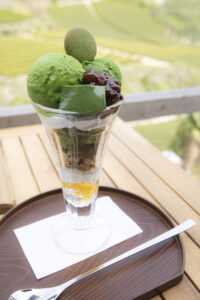
投稿タイプ:restaurants
Dan Dan Cafë
Located in Ishitera, this cafe offers a stunning view of Wazuka Town’s most famous tea plantation, which is a part of the Japan Heritage (Japanese Tea: Eight Centuries of Tradition).
With the hope that visitors would enjoy this wonderful scenery at a leisurely pace, the cafe was opened by a woman with experience in the food industry and her younger brother who is a local landowner of this place.
They offer handmade meals prepared one by one, such as dry curry or omelet with rice, and a lunch set with a wide variety of dishes. Their desserts and drinks are amazing, too. All the matcha green tea used at this cafe is from Wazuka, and the rich gelato called Dark Matcha is incredible. In the warm season, you can savor this gelato in a parfait, too. There are other gelato flavors, including seasonal fruit options, so you can enjoy a delightful combination with another flavor. You can get your gelato to go, too.
Please note that lunch dishes are limited in quantity.

投稿タイプ:sightseeing
Asahiyaki
Asahiyaki is a pottery that has thrived with the tea culture of Uji since its establishment in 1600. Passed down through 16 generations for over 400 years, it has a rich history.
Conveniently located on the eastern bank of Uji River within a tourist area, the pottery is within walking distance from Keihan Uji Station. As you walk along the river, enjoying the scenic views, you will arrive at the Asahiyaki Shop & Gallery. Here, you will find a stylish space with sophisticated works lined up. The works by the current head potter are likely to delight even serious collectors. At the same time, affordable options are on display, such as palm-sized teacups and small plates with a rustic charm.
Additionally, you can participate in a one-day pottery experience. Through hands-on experience, you can gain a deeper understanding of the process of their artwork. Participants can enter the building where a large nobori-gama (kiln with stepped chambers) is located. This is the only kiln of this scale in Kyoto. Furthermore, it is rare to find a nobori-gama that is still in active use in Kyoto.
Speaking of rare finds, few potteries handle the entire process from making the clay. At Asahiyaki, clay dug up from the ground of Uji over 50 years ago is slowly "aged" to make it easier to use.
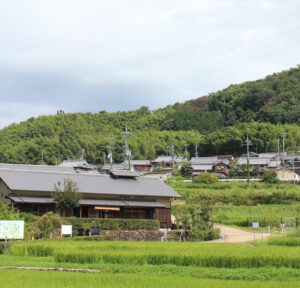
投稿タイプ:sightseeing
Ide Town Machizukuri Center Tsubakizaka
This facility promotes the town's charms through community gatherings, sales of local specialties, and more. Tourist brochures and maps are available, too. It's a great rest stop for those enjoying walks, historical site visits, and cycling to refresh. You can also enjoy coffee here. The building is reminiscent of a relaxing, traditional Japanese farmhouse. It has an irori (open fireplace) inside, offering a peaceful ambiance. Don’t forget to enjoy the quintessential Japanese experience of basking in the sun on the engawa (traditional wood floor veranda).
This place is located right by Tsubakizaka, a slope with a romantic tale from the Heian Period (794-1185). Legend has it that a man and a woman who once parted ways were reunited on this slope. The Ide Town Machizukuri Center Tsubakizaka was named with the hope that it would become a place where people meet, like the Tsubakizaka slope.
Nearby, a great walking path of Yamashiro-kodo Road passes. Furthermore, this area has historical sites, including a stone monument believed to be the gravestone of Ono no Komachi, who is famous as a legendary waka poet (a writer of classical Japanese poetry) and for her extraordinary beauty. The Tama River and Jizo Zen-in Temple, both famous for their cherry blossoms in spring, are also near here. This is a wonderful place where you can immerse yourself in the history and natural beauty of the area.
Consultation services for immigration and settlement are available on Tuesdays and Thursdays. (Appointments can be made for other days as well.)
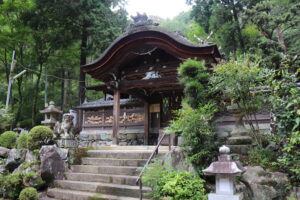
投稿タイプ:sightseeing
Tamatsuoka-jinja Shrine
This shrine is said to have originated in 540 when the female deity Shitateruhime no Mikoto descended to this place and was enshrined. In 731, Tachibana no Moroe established it as the local shrine. In the precincts, there is a smaller shrine dedicated to him, Tachibana-jinja Shrine. In addition, many other deities are enshrined here. The current main hall was constructed in 1687. It is built in a traditional Shinto shrine architectural style called Kasuga-zukuri.
Enveloped in dense foliage, the shrine is filled with cool air and deep shade of trees even in the midst of summer.
Right nearby, there is Jizozen-in Temple, where you can find a weeping cherry tree that is approximately 300 years old. The tree is designated a Natural Monument of Kyoto Prefecture.
